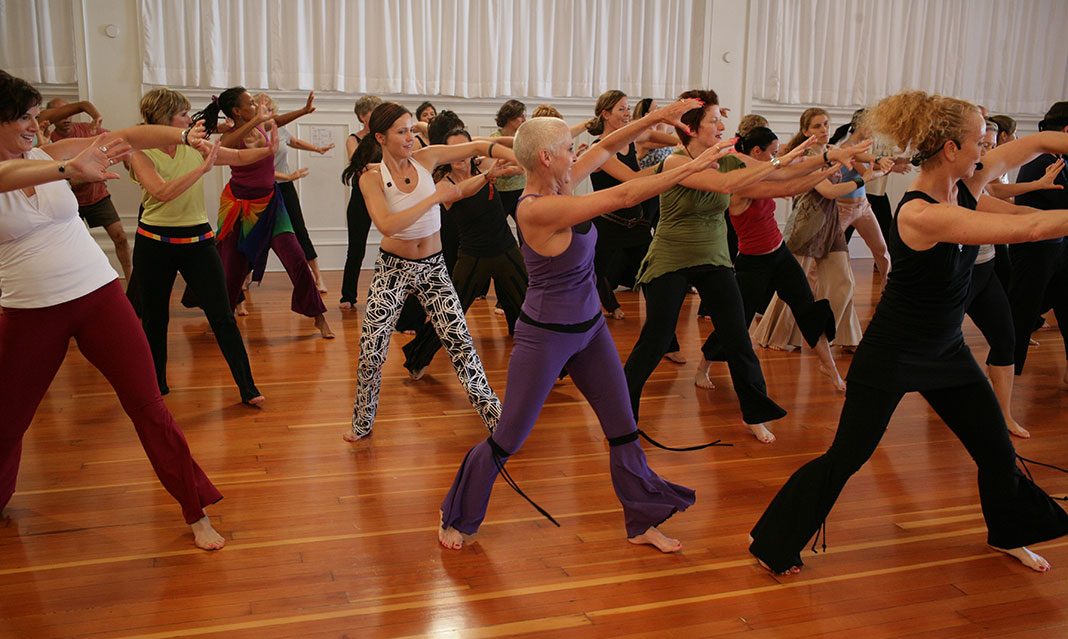I had no clue what I was in for when I agreed to go to a Nia dance class, one of the many extracurricular programs offered to students at the RAWC. In the background, meditative Indian sitar music filters through the speakers, and I immediately relax.
The instructor was shuffling barefoot across the floor to the music, so I took my shoes and socks off and awkwardly tried to imitate her. It was difficult because it looked like she had a steady tempo and almost instinctual way of moving to the music; her hands swayed softly in front of and beside her as she shifted her weight from foot to foot, all the while moving across the room towards the music player in the dance studio.
The music stopped playing and another lively beat started streaming into the room. “It’s all international music,” the instructor said, and then showed us the steps to some basic dance, martial arts, and yoga-inspired moves that we would be doing in the hour-long class. They weren’t complex and structured the way they normally are in other dance classes. Rather, they were simple and abstract, and required you to move your limbs and whole body naturally, without thinking too much about controlling the move. It sounds easy, but it really isn’t. As I mentioned earlier, it was actually difficult at the onset, despite my already having an intermediate-level experience in a variety of dance forms. The only way I could shirk that feeling of defeat and find my literal footing in the Nia genre of dance was by reminding myself to forget about choreography and control. Instead, I let the music guide when I decided to move and how I did.
The music consisted of a range of global tracks, as promised, that varied in culture of origin and influenced the moves that the instructor prompted us to do. There was no one count that was consistent through every song; it changed with every track, keeping us constantly alerted and waiting on the balls of our feet for what was to come next. Rhythm, repetition, and liveliness were the only things consistent throughout the playlist. It led us through the jazz, African, Spanish, bohemian, and martial arts-inspired moves that the instructor was demonstrating. This atmosphere made for a workout with the transcendent effects of meditation, elicited by the entrancing repetitive beats. It left me damp with sweat, but with a calm and sharp mind by the end of it.
“Music leads to movement leads to magic, is what it’s all about,” she said to me during a conversation after the class. “It came to be because there were so many people that had injuries from some of the high impact aerobics […] so the founders [of Nia] decided to put something together that would work in your body’s way, so that anybody could do it.”
Which is true. Nia does not demand fitness, dance, or age experience—it calls for natural and unforced movement. “I don’t care if you’re following the choreography; if the piece of music speaks to you and you want to dance in the back corner, that’s fine with me,” she said. “There’s always opportunity for what we call ‘free dance’, but I don’t do that because we don’t have the time.” She also explained how most participants are intimidated by that aspect of Nia and have requested her to choreograph those gaps for them, as she usually demonstrates steps. “Everybody thinks everybody’s looking at them, but what they don’t realize is that you get so into your own thing, you don’t know what the next guy is thinking,” she stressed. The objective of the entire art is to immerse yourself in the energy of your own experience of the music and how it courses through your body in the movements you make.



